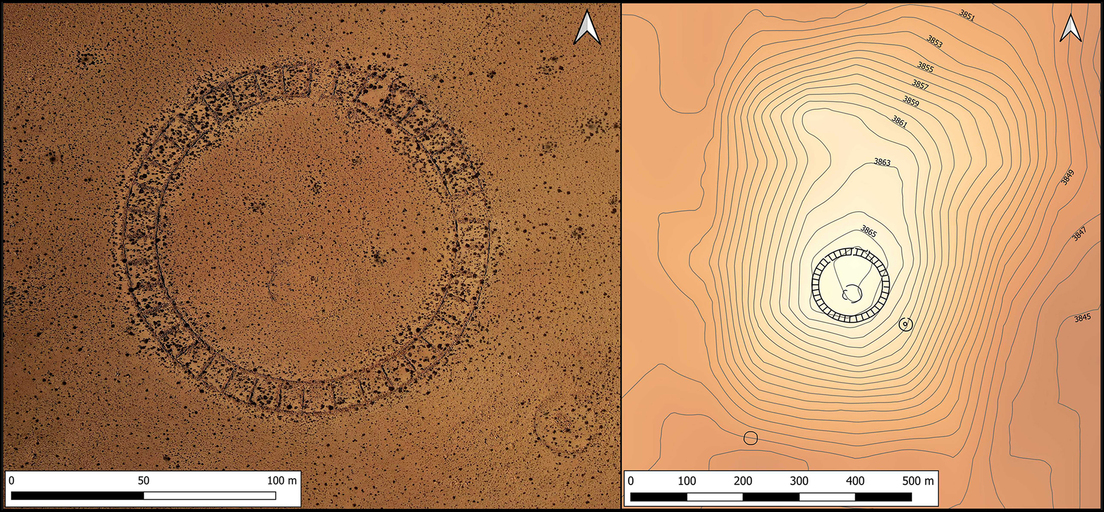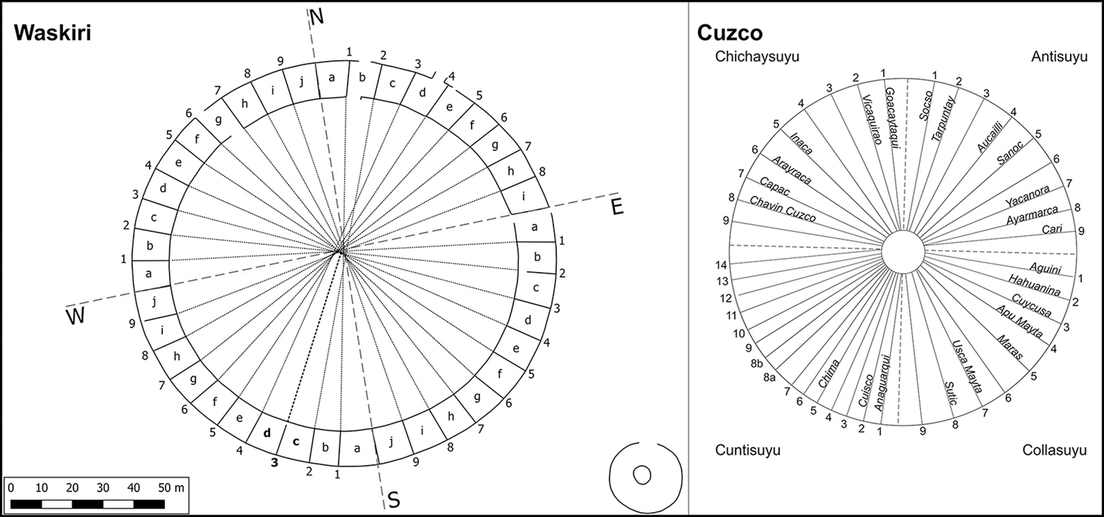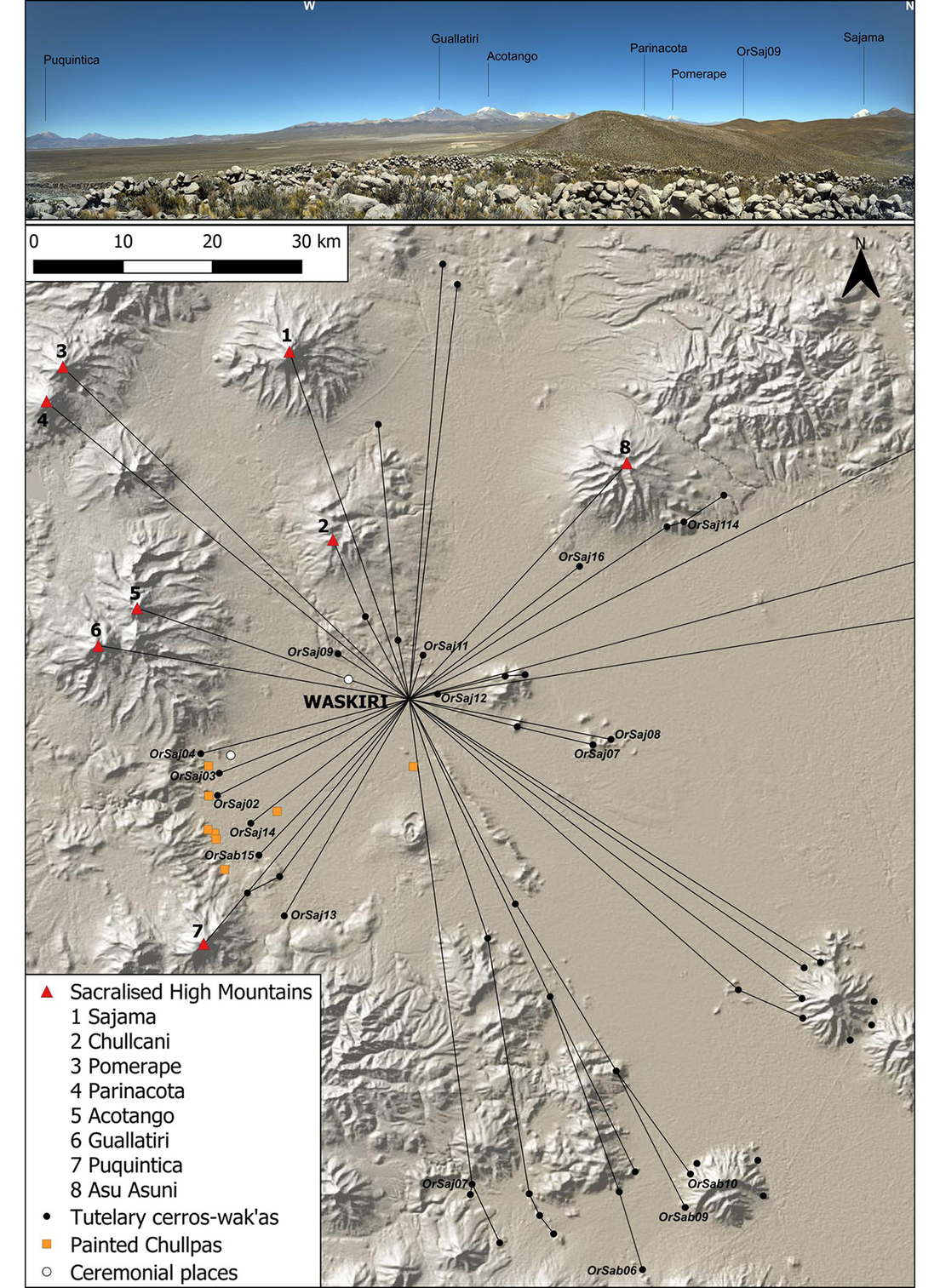It is a ceremonial centre with “unprecedented characteristics” for the Andes region, located in the province of Carangas, in the Bolivian altiplano.
By Ronald Ángel
Researchers from Argentina and France discovered in the province of Carangas in the Department of Oruro, in western Bolivia, “an impressive circular construction” of pre-Hispanic origin called ‘Waskiri’, which could have an antiquity of around 800 years.
The archaeological study was carried out by the Argentine Pablo Cruz and the French Richard Joffre and Jean Vacher, and published by the press office of the University of Cambridge in the journal Antiquity and on its website. It was funded by the French National Research Institute for Sustainable Development (IRD) and supported by the Institute of Anthropology and Archaeology of the Universidad Mayor de San Andrés (UMSA) in La Paz, Bolivia, and the Andean Networks project.
According to the experts’ report, the site they called ‘Waskiri’ is near the Lauca River and on the border between Bolivia and Chile, in the Bolivian altiplano, on “a small hill that is surprising, both for its large dimensions (140 metres in diameter) and for its design and regularity”.
 Photograph and plan of the Waskiri site Cambridge University Press / P. Cruz
Photograph and plan of the Waskiri site Cambridge University Press / P. Cruz
For the researchers, it is a “completely different” ceremonial centre that shows unknown characteristics compared to other sites found in the region, reports RT.
“The pre-Hispanic ceremonial centre of Waskiri is not only a surprising discovery in this sparsely populated desert region of the Andes, but also exhibits features that have no precedent in the pre-Hispanic Andes,” the study says.
Experts point out that there is probably an early reference to the site, described in a chronicle by the priest Bartolomé Álvarez during the 1580s, when he travelled through Carangas to carry out evangelisation work. The priest said that he had received information about a “large circular building” which he described as the “house and business of hell”, where the indigenous authorities of the region gathered to perform rituals of all kinds.
The site, the researchers describe, has “a perimeter ring made up of 39 contiguous enclosures, each with a surface area of between 106 and 144 square metres”, which between them enclose a large plaza of approximately one hectare, in which there are “abundant ceramic fragments attributed to the Late Intermediate and Late Periods”, that is, between the years 1,250 and 1,600 after Christ.
Use and origin of Waskiri
According to the study, ‘Waskiri’ is located in a desert area separated from any pre-Hispanic settlement or agricultural sector, and its function would have been as a regional ceremonial centre of neutral or common space.
“Waskiri has a central location within the religious cartography of the region, visually and spatially connected to major sacred mountains, numerous concentric walled sites, funerary towers adorned with designs replicating Inca textiles, and other geosymbolic markers,” the publication says.
 Comparison between the Waskiri site structure and the Cuzco ceque system Cambridge University Press / P. Cruz
Comparison between the Waskiri site structure and the Cuzco ceque system Cambridge University Press / P. Cruz
The experts indicate that the radial design of the site and its link to the main religious landmarks of the region, the wak’as, reflect “the system of Inca ceques, the roads that ordered the sacred geography of Cuzco, the capital of its peoples”.
In addition, the radial walls that delimit the 39 perimeter enclosures of Waskiri show “a structure very similar to that of the Inca ceque of Cuzco”.
“If Waskiri’s dividing walls did indeed represent a ceque system, this would be more explicit evidence that the Incas replicated the symbolic structure of Cuzco in the regions they colonised,” the study adds.
“A dense ritual landscape”
During the research, in addition to the ‘Waskiri’, which “stands out for its unprecedented characteristics for the Andes”, the experts commented that in the Carangas region they identified “a surprising concentration of pre-Hispanic religious sites, which are linked both to the ancient Andean cults of wak’a (sacred mountains, tutelary hills and mummified ancestors) and to the Inca settlement of the region”.
These studies, the archaeologists add, have revealed that in this region characterised by its extremely arid and cold climate, “many pre-Hispanic religious sites and structures that form a dense ritual landscape”, comprising at least 135 hilltop sites, most of which “are directly associated with ancient agricultural production areas”.
The sites “can be identified on the ground and in satellite images by their variable number of concentric walls (between two and nine per site), each of which occupies a different terrace level around the hilltop,” the researchers note.
 Above: view from Waskiri, showing the silhouettes of the main sacred mountains in the region. Below: distribution of sacred sites around Waskiri Cambridge University Press / P. Cruz
Above: view from Waskiri, showing the silhouettes of the main sacred mountains in the region. Below: distribution of sacred sites around Waskiri Cambridge University Press / P. Cruz
In all these spaces, abundant quantities of pre-Hispanic ceramic fragments are found, most of which are of local styles typical of the Late Intermediate and Late Intermediate Periods, along with some regional styles linked to the southern expansion of the Incas.
The research determined that these ceremonial spaces “emerged during the Late Intermediate Period, as did the pukaras, and were later appropriated and re-signified by the Incas”. In addition, he explains that their concentration in the altiplano could be due to the belief that the gods regulated the extreme climatic conditions, because a small variation in temperature or rainfall could cause the loss of crops or the death of livestock.
For the experts, this important discovery about the ceremonial centre and the ritual landscape in which Waskiri is located, “provides rich material for further studies of the pre-Hispanic history of this part of the Andes, an area that has generally been little studied”.
Ronald Ángel, journalist in the eye of the storm










